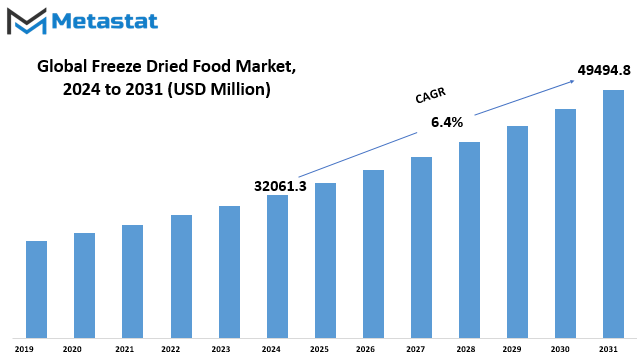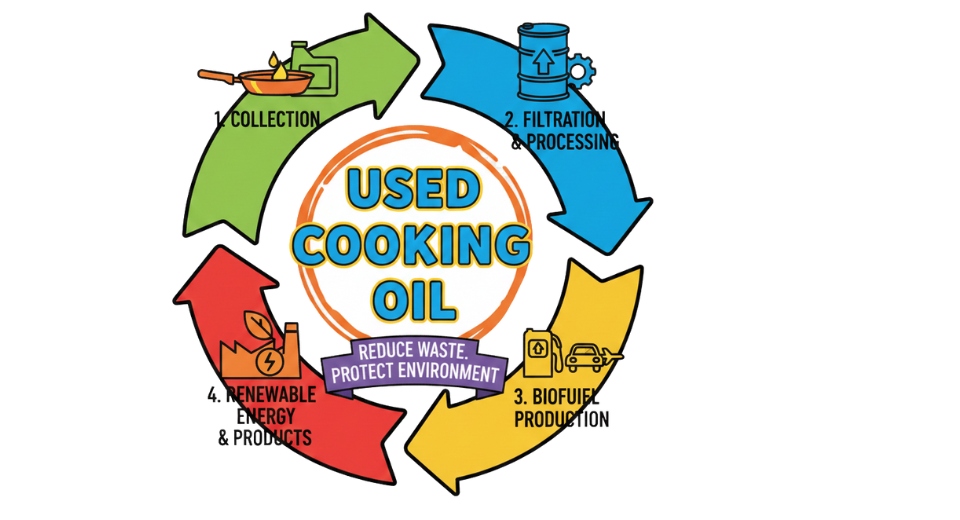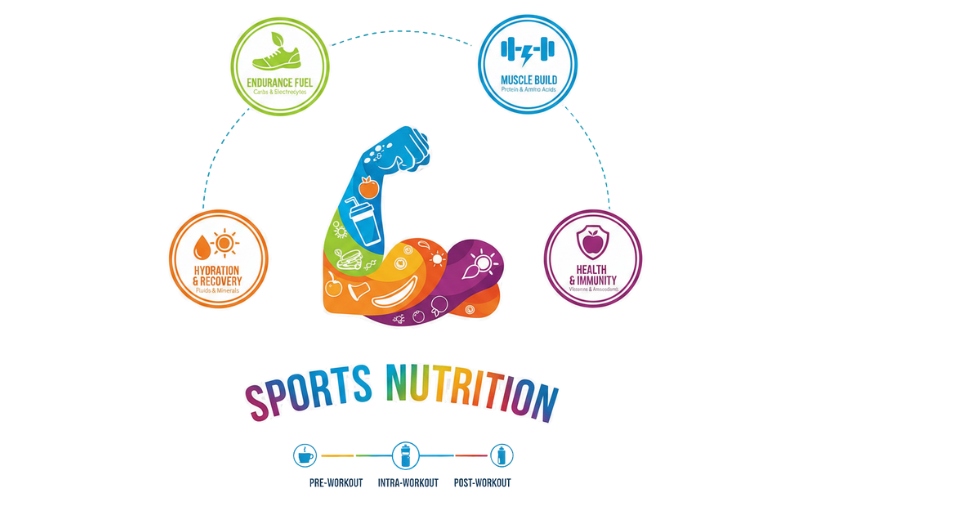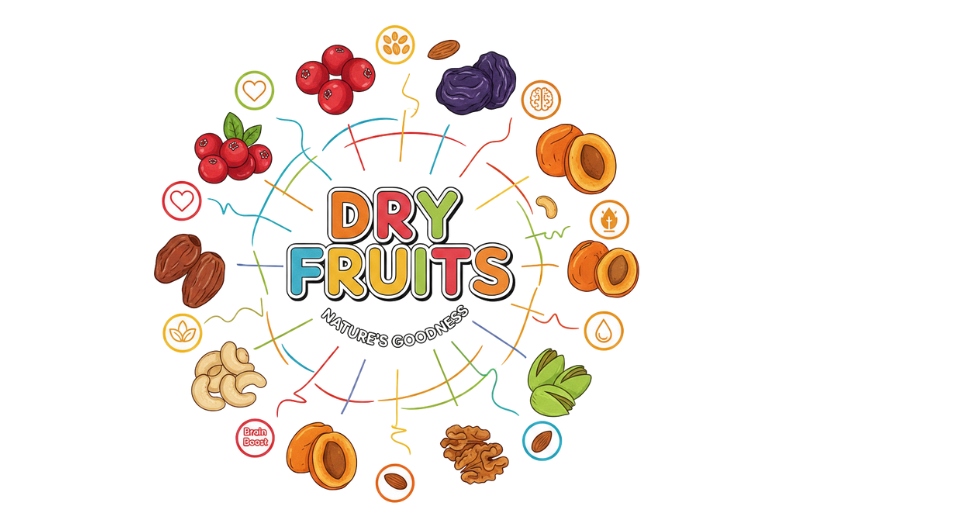MARKET OVERVIEW
The Global Freeze Dried Food market stands as a testament to the adaptability and ingenuity of the food industry. In a world where shelf life, convenience, and nutrition are paramount concerns, freeze-dried foods have emerged as a compelling solution. This industry represents a fusion of technology and culinary science, catering to a diverse range of consumers spanning backpackers, emergency preppers, space travelers, and everyday households seeking convenient yet nutritious meal options.
The freeze-drying process involves removing moisture from food products while preserving their taste, texture, and nutritional content. Unlike traditional dehydration methods, freeze-drying minimizes cellular damage, resulting in food that retains much of its original flavor and nutritional value. This unique preservation technique has enabled the creation of lightweight, shelf-stable products that can be rehydrated with ease, offering consumers the convenience of instant meals without compromising on quality.
The applications of freeze-dried foods extend across various sectors. Adventure enthusiasts and outdoor explorers rely on these lightweight, compact meals for sustenance during backpacking trips, camping excursions, and expeditions into remote regions where traditional cooking facilities are unavailable. Similarly, freeze-dried foods have become a staple in emergency preparedness kits, offering a reliable source of nourishment during natural disasters, power outages, or other unforeseen emergencies.
Moreover, the appeal of freeze-dried foods transcends recreational and emergency contexts, finding favor among busy professionals, students, and individuals leading fast-paced lifestyles. With hectic schedules leaving little time for meal preparation, freeze-dried options provide a convenient alternative, requiring minimal effort to prepare while still delivering satisfying flavors and essential nutrients.
Furthermore, the healthcare sector has recognized the value of freeze-dried foods in meeting the dietary needs of patients with specific medical conditions or dietary restrictions. From astronauts aboard spacecraft to patients recovering from surgery, freeze-dried meals offer a convenient and nutritionally dense solution that can be customized to meet individual dietary requirements.
The Global Freeze Dried Food market encompasses a diverse array of products, ranging from fruits, vegetables, and meats to complete meals and specialty items. Manufacturers continually innovate to meet evolving consumer preferences, incorporating exotic flavors, dietary considerations, and sustainability initiatives into their product offerings. Additionally, advancements in packaging technology have extended the shelf life of freeze-dried foods, ensuring long-term freshness and quality for consumers worldwide.
As consumer awareness of health, sustainability, and convenience continues to grow, the Global Freeze Dried Food market remains poised for expansion. With ongoing research and development efforts focused on enhancing product quality, flavor profiles, and nutritional benefits, freeze-dried foods are well-positioned to maintain their relevance in the global food industry. Whether fueling outdoor adventures, providing emergency sustenance, or offering a quick and nutritious meal option, freeze-dried foods exemplify the intersection of innovation and practicality in modern food consumption.
Global Freeze Dried Food market is estimated to reach $49494.8 Million by 2031; growing at a CAGR of 6.4% from 2024 to 2031.

GROWTH FACTORS
The global freeze-dried food market is influenced by several factors driving its growth. Among these, the ability of freeze-dried food to maintain a long shelf life stands out. This characteristic is particularly appealing to consumers because it ensures that food remains edible for extended periods, reducing wastage and offering convenience. Additionally, the preservation process involved in freeze-drying helps to retain the nutritional content of the food, enhancing its health benefits. These combined factors make freeze-dried food an attractive option for many consumers seeking both convenience and nutrition in their dietary choices.
However, despite these advantages, there are challenges that may impede the market's growth. One such challenge is the high initial cost associated with freeze-dried food products. The specialized equipment and processes involved in freeze-drying can result in higher production costs compared to traditional food preservation methods. As a result, the initial price of freeze-dried products may deter some consumers from purchasing them, especially those with limited disposable income.
Another potential barrier to market growth is the limited variety of food types available in freeze dried form. While certain foods lend themselves well to the freeze-drying process, not all types of food are suitable for this preservation method. This limitation may restrict consumer choices and prevent some individuals from fully embracing freeze-dried foods as part of their diet.
Despite these challenges, there are opportunities for growth within the freeze-dried food market. One such opportunity lies in the concept of customized nutrition. As consumers become increasingly conscious of their dietary needs and preferences, there is growing demand for personalized food products that cater to individual requirements. Freeze-dried food manufacturers can capitalize on this trend by offering customizable options that allow consumers to tailor the nutritional content of their food to suit their specific needs. Whether it be adjusting portion sizes, incorporating specific nutrients, or accommodating dietary restrictions, the ability to customize freeze-dried food products presents a promising avenue for market expansion in the years to come.
While the global freeze-dried food market faces challenges such as high initial costs and limited food types, its growth is driven by factors such as long shelf life and nutritional benefits. By tapping into opportunities such as customized nutrition, manufacturers can further stimulate market growth and meet the evolving needs of consumers seeking convenient and nutritious food options.
MARKET SEGMENTATION
By Product Type
The Global Freeze Dried Food market, when categorized by Product Type, is broken down into several segments. These segments include Fruits, Vegetables, Freeze-Dried Dairy Products, Freeze-Dried Meat and Seafood, Freeze-Dried Pet Food, and Prepared Meal. Each of these categories represents a distinct subset within the broader freeze-dried food market.
Starting with fruits and vegetables, these segments entail freeze-dried versions of various fruits and vegetables. Freeze-drying involves removing moisture from the food while preserving its flavor and nutritional content, resulting in lightweight and long-lasting products. This process allows fruits and vegetables to retain their natural taste and nutrients, making them convenient options for consumers seeking healthy snacks or ingredients for meals.
Moving on to freeze-dried dairy products, this category encompasses items like milk, cheese, and yogurt that have undergone the freeze-drying process. Freeze-dried dairy products offer extended shelf life without the need for refrigeration, making them suitable for storage and transport in various environments. They can be rehydrated with water to restore their original texture and taste, providing a versatile option for both consumers and food manufacturers.
Similarly, freeze-dried meat and seafood represent another segment within the market. These products include various types of meat, such as beef, chicken, and pork, as well as seafood like shrimp, fish, and scallops. Freeze-drying preserves the flavor and nutritional value of meat and seafood while removing moisture, resulting in lightweight and shelf stable products. This makes them ideal for camping, hiking, or emergency preparedness kits, as well as convenient ingredients for soups, stews, and other dishes.
Furthermore, freeze-dried pet food has emerged as a popular option for pet owners seeking convenient and nutritious alternatives to traditional pet food. These products often contain freeze-dried meats, vegetables, and other ingredients tailored to meet the nutritional needs of dogs and cats. Freeze-dried pet food offers the convenience of long-term storage and portion control while providing pets with essential nutrients and flavors they enjoy.
The Prepared Meal segment includes a variety of freeze-dried meals designed for quick and easy preparation. These meals typically consist of a combination of ingredients such as meats, vegetables, grains, and sauces that have been freeze-dried and packaged for individual servings. They offer consumers a convenient option for meals at home or on the go, with minimal preparation time and no need for refrigeration.
The Global Freeze Dried Food market encompasses a diverse range of products categorized by Product Type, including fruits, vegetables, dairy products, meat and seafood, pet food, and prepared meals. Each segment offers unique benefits in terms of convenience, nutrition, and shelf life, catering to the diverse needs and preferences of consumers worldwide.

By Nature
The global freeze-dried food market is split into two main categories based on nature: organic and conventional. In 2022, the organic segment was worth $7,714.9 million, while the conventional segment was valued at $20,592.1 million.
Freeze-dried food has gained popularity due to its extended shelf life and retention of nutrients. This process involves freezing the food and then removing most of its moisture content through sublimation. The resulting product is lightweight, retains its original shape, color, flavor, and nutritional value, and can be rehydrated quickly.
The organic segment of the market refers to foods that are grown and processed without synthetic fertilizers, pesticides, or genetically modified organisms (GMOs). Organic freeze dried foods are preferred by consumers who prioritize natural and sustainable products. These foods are often perceived as healthier and environmentally friendly, catering to the increasing demand for organic products in the market.
On the other hand, the conventional segment comprises foods that are produced using conventional farming methods, which may involve the use of synthetic chemicals and GMOs. Conventional freeze-dried foods are more widely available and often come at a lower price point compared to organic options. While some consumers may prefer conventional products due to affordability or accessibility, others may be concerned about the potential health and environmental impacts associated with conventional farming practices.
Both segments of the freeze-dried food market cater to different consumer preferences and needs. While organic options appeal to those seeking natural and sustainable products, conventional options offer a wider variety of choices at varying price points. Additionally, the availability of organic and conventional freeze-dried foods depends on factors such as regional agricultural practices, consumer awareness, and market demand.
In recent years, there has been a growing trend towards healthier eating habits and sustainable consumption. This has led to increased demand for organic and natural food products, including freeze-dried foods. As consumers become more conscious of the environmental and health implications of their food choices, the market for organic freeze dried foods is expected to continue growing.
The global freeze-dried food market is divided into organic and conventional segments, each catering to different consumer preferences. While organic options appeal to those seeking natural and sustainable products, conventional options offer a wider variety of choices at varying price points. With increasing awareness of health and environmental concerns, the demand for organic freeze-dried foods is expected to rise in the coming years.
By Form
The global market for freeze-dried food offers various forms to cater to different preferences and needs. These forms include powdered, granules, and diced. Each form presents its own advantages and uses, making freeze-dried food a versatile option for consumers worldwide.
Powdered freeze-dried food offers convenience and versatility. It can be easily reconstituted with water to create a variety of dishes, ranging from soups to smoothies. This form is particularly popular among hikers, campers, and outdoor enthusiasts due to its lightweight nature and long shelf life. Powdered freeze-dried food is also commonly used in emergency preparedness kits as it can be quickly prepared with minimal resources.
Granules provide a middle ground between powdered and diced forms. They maintain some texture and shape, making them suitable for dishes where a bit of crunch or bite is desired. Granules are often used in recipes such as stews, casseroles, and pasta dishes. They offer convenience similar to powdered form but with slightly more substance, enhancing the eating experience.
Diced freeze-dried food retains more of its original texture and appearance compared to powdered and granules. This form is commonly used in salads, trail mixes, and snack packs. Diced fruits and vegetables, in particular, are popular among health-conscious consumers looking for convenient ways to incorporate more produce into their diets. The rehydration process for diced freeze-dried food may take slightly longer compared to powdered and granules, but the resulting product closely resembles its fresh counterpart.
The versatility of freeze-dried food extends beyond its various forms to encompass a wide range of applications. From emergency food supplies to gourmet ingredients, freeze-dried food serves diverse needs across industries and consumer demographics. Its lightweight, shelf-stable nature makes it an ideal choice for military rations, space missions, and humanitarian aid efforts. Additionally, freeze-dried food has gained traction in the culinary world, with chefs incorporating it into innovative dishes to add texture, flavor, and visual appeal.
The global freeze-dried food market continues to grow as manufacturers innovate to meet evolving consumer demands. Advancements in technology have led to improvements in the quality, taste, and nutritional value of freeze-dried products. As more people prioritize convenience, sustainability, and health-conscious eating habits, freeze-dried food offers a convenient and nutritious solution for busy lifestyles. Whether used for outdoor adventures, emergency preparedness, or culinary creativity, freeze-dried food has secured its place as a staple in modern diets around the world.
By End Use
The global Freeze Dried Food market encompasses various segments based on end use, including Breakfast Cereals, Dairy Products, Bakery & Confectionery, Nutritional Bars & Supplements, Powdered Beverages, Snacks, and Retail (Household). Each segment plays a significant role in the market, catering to diverse consumer preferences and needs.
Breakfast Cereals, valued at 3915.6 USD Million in 2022, represent a substantial portion of the market. These include a wide range of cereals that have been freeze-dried to preserve their taste, texture, and nutritional value. Consumers appreciate the convenience and long shelf life of freeze-dried breakfast cereals, making them a popular choice for busy mornings.
Similarly, the Dairy Products segment, valued at 2641.7 USD Million in 2022, comprises freeze-dried versions of various dairy items such as milk, yogurt, and cheese. Freeze-drying helps maintain the flavor and nutritional content of dairy products while extending their shelf life. This makes them suitable for both domestic consumption and industrial applications.
Bakery & Confectionery products, valued at 3848.1 USD Million in 2022, also contribute significantly to the freeze-dried food market. These include freeze-dried cakes, cookies, chocolates, and other sweet treats. Freeze-drying preserves the texture and taste of baked goods, offering consumers a convenient way to enjoy their favorite desserts without compromising on quality.
Nutritional Bars & Supplements, valued at 1416.4 USD Million in 2022, cater to health conscious consumers seeking convenient and nutritious on-the-go snacks. Freeze-dried ingredients are commonly used in the production of nutritional bars and supplements to ensure optimal nutrient retention and shelf stability.
Additionally, the market includes Powdered Beverages, which offer a convenient alternative to traditional liquid beverages. Freeze-drying helps preserve the flavor and aroma of powdered drinks, ensuring a consistent taste experience for consumers.
Snacks, encompassing a variety of freeze-dried options such as fruits, vegetables, and meat products, provide consumers with convenient, lightweight, and nutritious snack choices. The freeze-drying process helps retain the natural flavor and nutritional value of these snacks, making them a popular choice for health-conscious individuals.
Retail (Household) sales play a crucial role in the distribution of freeze-dried food products to consumers. This segment includes both online and offline retail channels where consumers can purchase freeze-dried food items for home consumption.
The global Freeze Dried Food market comprises a diverse range of segments, each catering to specific consumer preferences and needs. From breakfast cereals to snacks, freeze-dried food products offer convenience, long shelf life, and nutritional benefits, making them a popular choice among consumers worldwide.
REGIONAL ANALYSIS
The global Freeze Dried Food market is analyzed based on geographical regions, namely North America, Europe, Asia-Pacific, and South America. Understanding the market dynamics in each region helps to grasp the overall picture of the industry's performance.
North America stands out as one of the leading regions in the Freeze Dried Food market. With a robust economy and a penchant for convenience, consumers in this region show a notable demand for freeze-dried food products. Factors such as busy lifestyles and a growing preference for nutritious yet convenient food options drive the market's growth here. Moreover, advancements in technology and packaging techniques further propel the market forward, making freeze-dried foods more accessible and appealing to consumers.
Europe also holds a significant share in the global Freeze Dried Food market. Similar to North America, European consumers value convenience without compromising on quality. Freeze-dried foods offer a solution to this demand by providing long shelf life and retaining nutritional value. Additionally, increasing health consciousness among Europeans fosters the adoption of freeze-dried products as they are perceived as healthy and natural alternatives to traditional snacks.
Moving on to the Asia-Pacific region, the market for freeze-dried foods is witnessing substantial growth. The region's large population coupled with rising disposable incomes contributes to the increasing demand for convenient food options. Furthermore, changing dietary preferences and lifestyle shifts towards on-the-go consumption patterns drive the market's expansion in countries like China, India, and Japan. As a result, manufacturers are increasingly focusing on product innovation and marketing strategies tailored to meet the diverse tastes and preferences of consumers in this region.
South America also plays a notable role in the global Freeze Dried Food market. Although the market in this region is relatively smaller compared to North America and Europe, it is experiencing steady growth. Factors such as urbanization, changing consumer lifestyles, and an expanding middle class contribute to the rising demand for freeze-dried food products. Additionally, increasing awareness regarding the benefits of freeze-dried foods, such as convenience and longer shelf life, further fuel market growth in South America.
A regional analysis of the global Freeze Dried Food market reveals significant opportunities and challenges across different geographical regions. Understanding the unique dynamics of each region is crucial for stakeholders to develop effective strategies and capitalize on emerging trends to drive growth in the market.
COMPETITIVE PLAYERS
The Global Freeze Dried Food market is vibrant and diverse, with numerous players vying for their share of the pie. Among the competitive players in this industry are Kerry Group Plc, European Freeze Dry Ltd., Paradise Fruits Solutions GmbH & Co. KG, Chaucer Foods Ltd, Saraf Foods Ltd., Kenegrade Ltd., Nestle SA, Ajinomoto Co. Inc., Asahi Group Holdings Ltd, Harmony House Foods Inc., Lyofood Sp. z o.o., Thrive Foods LLC, Newark Nut Company, The Kraft Heinz Co., Mondelez International Inc., SouthAm Freeze Dry, The Hain Celestial Group Inc., DohlerGroup, Unilever Group, and The Kroger Co.
These companies bring various strengths and strategies to the table, contributing to the dynamism of the Freeze Dried Food market. Kerry Group Plc, for instance, is known for its innovative approach and wide range of offerings. European Freeze Dry Ltd. boasts advanced technology and a strong global presence. Paradise Fruits Solutions GmbH & Co. KG focuses on providing high-quality, natural products. Chaucer Foods Ltd. stands out for its commitment to sustainability and ethical sourcing practices.
Saraf Foods Ltd. emphasizes customer satisfaction and customization options, while Kenegrade Ltd. is recognized for its reliability and efficiency in production. Nestle SA, one of the giants in the industry, leverages its extensive distribution network and brand recognition. Ajinomoto Co. Inc. prioritizes research and development, constantly introducing new flavors and formulations.
Asahi Group Holdings Ltd. is known for its strategic acquisitions and investments in emerging markets. Harmony House Foods Inc. appeals to health-conscious consumers with its organic and non-GMO offerings. Lyofood Sp. z o.o. specializes in freeze-drying technology and equipment. Thrive Foods LLC targets the outdoor and adventure market with lightweight and portable options.
Newark Nut Company focuses on premium ingredients and gourmet blends, while The Kraft Heinz Co. capitalizes on its iconic brands and mass-market appeal. Mondelez International Inc. offers convenience and indulgence with its snack-focused portfolio. SouthAm Freeze Dry taps into South American flavors and ingredients.
The Hain Celestial Group Inc. caters to the growing demand for plant-based and gluten-free products. DohlerGroup provides comprehensive solutions for food and beverage manufacturers. Unilever Group emphasizes sustainability and social responsibility in its operations. The Kroger Co. leverages its extensive retail footprint and private label offerings.
The Freeze Dried Food market is fiercely competitive, with each player bringing its unique strengths and strategies to the forefront. Whether it's innovation, technology, quality, sustainability, or market reach, these key players play a crucial role in shaping the landscape of the industry.
Freeze Dried Food Market Key Segments:
By Product Type
- Fruits
- Vegetables
- Freeze-Dried Dairy Products
- Freeze-Dried Meat and Seafood
- Freeze-Dried Pet Food
- Prepared Meal
By Nature
- Organic
- Conventional
By Form
- Powdered
- Granules
- Diced
By End Use
- Breakfast Cereals
- Dairy Products
- Bakery & Confectionery
- Nutritional Bars & Supplements
- Powdered Beverages
- Snacks
- Retail (Household)
Key Global Freeze Dried Food Industry Players
- Kerry Group Plc
- European Freeze Dry Ltd.
- Paradise Fruits Solutions GmbH & Co. KG
- Chaucer Foods Ltd
- Saraf Foods Ltd.
- Kenegrade Ltd.
- Nestle SA
- Ajinomoto Co. Inc.
- Asahi Group Holdings Ltd
- Harmony House Foods Inc.
- Lyofood Sp. z o.o.
- Thrive Foods LLC
- Newark Nut Company
- The Kraft Heinz Co.
- Mondelez International Inc.
WHAT REPORT PROVIDES
- Full in-depth analysis of the parent Industry
- Important changes in market and its dynamics
- Segmentation details of the market
- Former, on-going, and projected market analysis in terms of volume and value
- Assessment of niche industry developments
- Market share analysis
- Key strategies of major players
- Emerging segments and regional growth potential








 US: +1 3023308252
US: +1 3023308252






